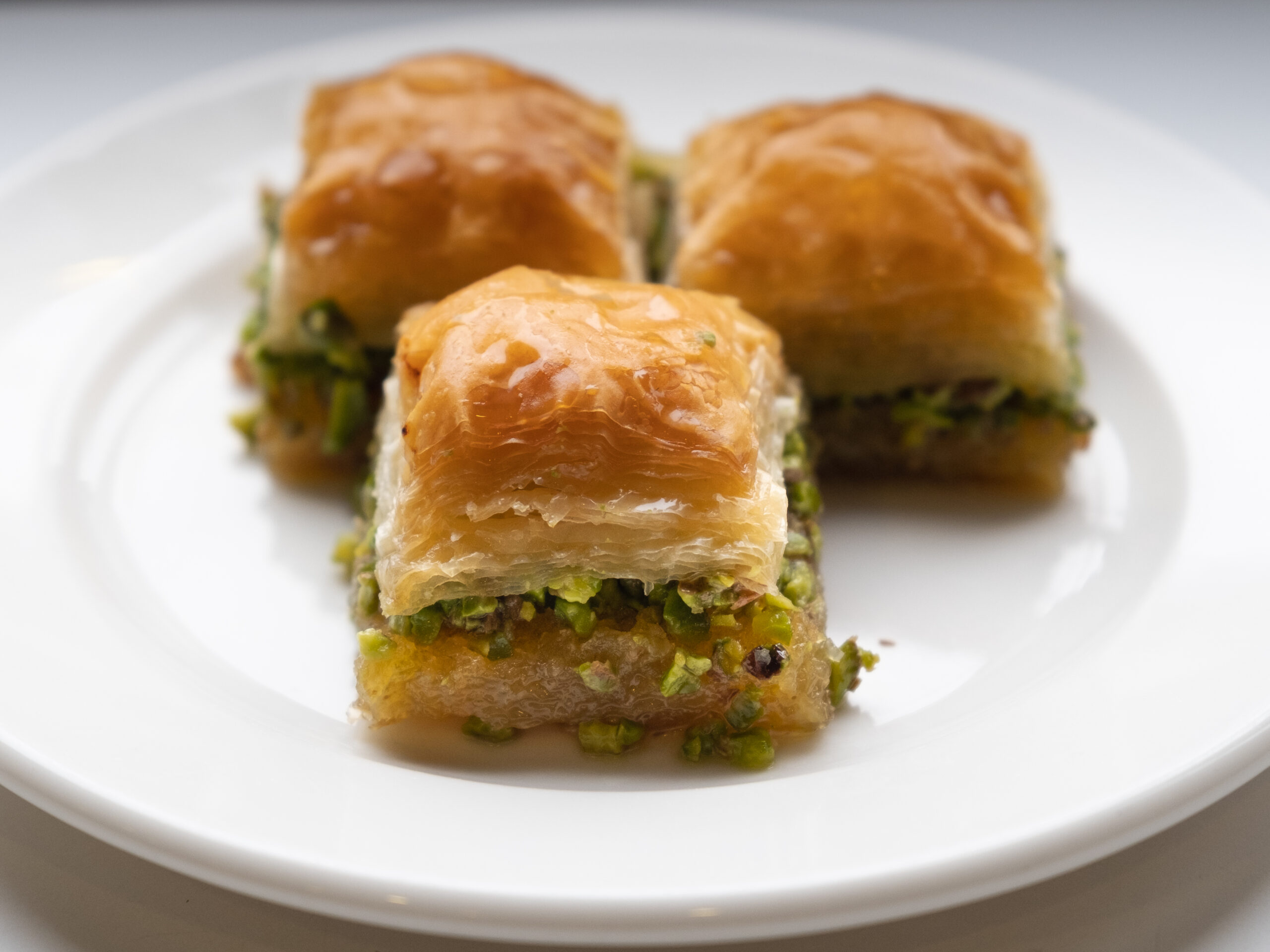Baklava. This delectable Turkish pasty featuring paper-thin layers of phyllo dough, butter and a fragrant sweet syrup is almost certainly the first dessert on the gastronomic itinerary of every tourist visiting Türkiye. A true feast of flavour, baklava is also a significant symbol of Türkiye’s rich cultural heritage. The pastry’s centuries-old tradition, craftsmanship and rich history have led to the establishment of its special day. Let’s discover the story behind baklava on 17 November, World Baklava Day.
A Dessert for Special Occasions
Sources indicate that baklava originated from the Turkish yufka culture, emerging in its present perfect form in the kitchens of the Ottoman palace. First mentioned in palace records in 1473, baklava was served for celebrations, feasts, and important days in history. Indeed, baklava achieved such prominence in the palace that, by the 18th century, only master chefs specifically trained in baklava preparation made this dessert. These skilled craftsmen allegedly could roll the phyllo dough into sheets as thin as rose petals – creating baklava with nearly 100 layers of phyllo. On important occasions, baklava was served to soldiers. This ceremony was known as the Baklava Procession (Baklava Alayı), and the public watched with enthusiasm as the military men received sherbet-flavoured baklava.
Symbol of Cultural Heritage
Baklava is one of the national desserts in Türkiye and vividly illustrates the country’s rich cultural heritage with its countless varieties. While travelling in Türkiye, you can sample various regional baklava varieties. The baklava in the Black Sea region features hazelnuts, while walnuts are the preferred baklava filling in Central Anatolia. Almonds are used in the Coastal Aegean region, and sesame seeds in Edirne and Thrace. In Southeastern Anatolia, baklava is prepared with finely crushed pistachios.
In Southeastern Anatolia, the city of Gaziantep is renowned for its culinary traditions and is in the UNESCO Creative Cities Network. Notably, Gaziantep’s outstanding baklava is acclaimed worldwide. In fact, “Antep Baklava/Gaziantep Baklava” has been granted Protected Geographical Indication status by the EU. The city’s venerable baklava tradition has been passed from generation to generation, with apprentices learning from masters. The Gaziantep baklava, differing from other versions of the dessert in the quality of its ingredients and its preparation, is made with 40-45 layers of thin phyllo and dressed with the region’s famous pistachios. In addition, the pastry is baked in stone ovens fired with oak wood.
The Gaziantep baklava masters believe that the dessert should appeal to the five senses in its appearance and flavour. While the ingredients in baklava are relatively straightforward, the production of the dessert requires immense skill and attention to detail. According to the masters, a good baklava must first be adequately cooked and rise well. It should be pleasing to the eye, featuring a golden yellow colour. It should be light when you lift it to your lips, not heavy from too much syrup, and have an aroma of fresh pistachios and clarified butter. When you bite into a piece of baklava, you should hear the rustling of the thinly rolled phyllo dough, and, of course, it should taste delicious. In Gaziantep, baklava is an integral part of the culture, with numerous shops and bakeries. Naturally, there is also a baklava museum in the city.
A True Feast of Flavour
Although this impeccable blend of sugar, nuts and other delicious ingredients is baklava, the dessert takes on different names according to the production and cutting methods. This array includes havuç dilimi baklava (carrot-slice baklava) and midye baklava (mussel-shaped baklava), made by shrinking the phyllo. There’s bülbül yuvası (nightingale’s nest), in which the shrunken phyllo is shaped into a ring, and sütlü (milky) nuriye, made with milk instead of syrup. Kuru (dry) baklava uses less syrup for a crispier pastry, while fıstık sarma (pistachio wrap) and ceviz sarma (walnut wrap) feature an abundance of crushed pistachios and walnuts.

